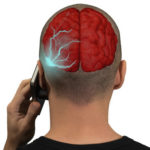-
-
Nashville, Tennessee
-
Two long-awaited studies of how cell phone radiation affects the health of mice and rats, released yesterday, are giving scientists plenty to think about – but the findings won’t resolve the decades-old uncertainty surrounding the issue.
 The voluminous but sometimes puzzling results also aren’t likely to prompt U.S. agencies or other bodies to immediately change how they regulate the ubiquitous devices or view their health risks.
The voluminous but sometimes puzzling results also aren’t likely to prompt U.S. agencies or other bodies to immediately change how they regulate the ubiquitous devices or view their health risks.
Questions over whether cell phones harm health have persisted for decades. The devices emit non-ionizing, electromagnetic radiation of the sort that heats food in a microwave oven, but scientists have struggled to conclusively link cell phone use to cancers or other illnesses.
In a bid to clarify matters, the U.S. Food and Drug Administration (FDA), which plays a key role in developing U.S. cell phone regulations, asked the National Toxicology Program (NTP) at the National Institutes of Health to launch studies examining the issue. Yesterday, NTP released two studies conducted as part of a $25 million research program.
In the studies, which lasted 2 years, rats and mice of both sexes ran freely in specially constructed reverberation chambers where their entire bodies were exposed to radiation. The levels ranged from a low of 1.5 watts per kilogram to a high of 10/Kg, and exposures were limited to the 2G and 3G frequencies, which are still widely used for voice calls and texting. In general, the animals were exposed to radiation levels that either matched or exceeded what’s permissible under current U.S. regulations.
Exposures began during pregnancy and then continued nine hours a day for 2 years, “which is not a situation that most people will encounter when using cell phones,” said John Bucher, a senior scientist at NTP who co-directed the study. “Though it does allow us to explore the potential for biological effects if they’re going to occur.”
The study’s strongest finding was that male rats had an elevated risk of developing tumors, called malignant schwannomas, in the connective tissues surrounding nerves in the heart. Sex- and species-dependent increases were also observed for lymphoma, as well as cancers of the prostate, skin, lung, liver and brain, but these findings were weaker by comparison and possibly due to causes other than radiation. Similarly, the researchers observed non-cancerous health effects — including lower birth weights, evidence of DNA damage, and heart conditions – among exposed rats, although it was not always clear if the conditions were caused by radiation exposure.
In a counterintuitive result, male rats and mice exposed to radiation lived longer, and had lower levels of age-related kidney disease, than males not exposed to radiation.
Early reactions to the findings suggest they will not dramatically reshape the debate over cell phone safety. Both critics and supporters of current risk evaluations and safety standards claim the studies support their points of view.
The new findings are “incredibly important,” says David Carpenter, a public health physician at the University of Albany, New York, who has long warned of cell phone dangers. “I think this is the first clear evidence showing that these sorts of radiofrequency fields increase risks for all kinds of cancer,” he says, noting that malignant schwannomas have been detected in previous human studies of cell phone risk. He believes that more of the associations between radiation exposure and rodent disease could have reached statistical significance had the study included a larger number of animals.
Jonathan Samet, who led a prominent international scientific panel that concluded that cell phone radiation was a “probable” human carcinogen, predicts the new studies won’t “nudge that classification in one direction or another.” The panel led by Samet, dean of the Colorado State University School of Public Health in Fort Collins, was organized by the International Agency for Research on Cancer, a specialized agency of the World Health Organization.
The findings don’t suggest that U.S. regulations on cellphone radiation need to be tightened, said Jeffrey Shuren, director of the FDA’s Center for Devices and Radiological Health, in a statement. The new studies, when combined with previous research, have “given us the confidence that the current safety limits for cell phone radiation remain acceptable for protecting the public health.”
The NTP’s Bucher, who helped lead the new studies, says he has no intention of changing his cell phone habits.
In a statement, the U.S. National Cancer Institute noted that “often, when concerns are raised about exposures that may confer low-level risk for a rare cancer outcome—as is the case for cell phones and brain tumors—it takes time and many studies to come to a conclusion based on the weight of the evidence.” It notes that a major European study of cell phones and brain tumor risk is expected to report results later this year.
Meanwhile, external experts are scheduled to review the new NTP studies at a meeting in late March. NTP also plans to continue its animal studies in new chambers that replicate the radiation produced by the current generation of 4G cell phones.
Posted in Cell Phones Safty, Cell Towers, EMF-home-inspection, Nashville Tennessee Home inspections, Wi-Fi